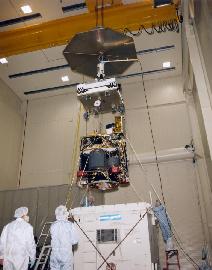This is an image of the Mars '98 spacecraft being prepared for launch.
Click on image for full size
NASA
An Overview of the Mars '98 mission
The Mars '98 mission was made of two spacecraft called the Mars Climate Orbiter and the Mars Polar Lander. The Orbiter was going to orbit Mars and search for water. The Lander was supposed to land near the south pole. It would've used a robot arm to dig in the Martian soil! Cool!
The mission was suppose to build upon the discoveries of the Mars Pathfinder and Mars Global Surveyor missions. But, both spacecraft were lost when they reached Mars.
You might also be interested in:
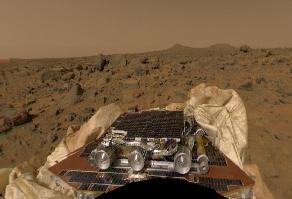
People were really excited when Pathfinder landed on Mars on July 4, 1997. The Mars Pathfinder mission (MPF for short!) was sent to Mars to look at the rocks and soil of Mars. The MPF was actually 2 parts,
...more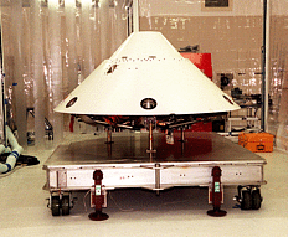
NASA gave up on the Mars Polar Lander, but it may still be alive! Two faint signals were sent to Earth. Scientists say they probably came from Mars. The lander was supposed to send back to signals if
...more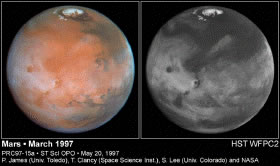
Unlike the Earth, where clouds are found around the entire globe, on Mars, clouds seem only to be found near the equator, as shown in this Hubble telescope image. This may be because water of Mars may
...more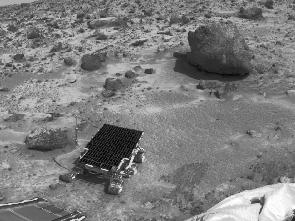
When Mars Observer blew up, the Mars Surveyor Program was born. The Surveyor Program was suppose to consist of 8 spacecraft. The spacecraft were named: Mars Pathfinder, Mars Global Surveyor, Mars '98,
...more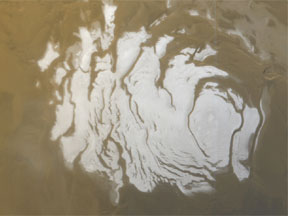
The first spacecraft to take a picture of the South Pole of Mars was Mariner 7. The South Pole of Mars has craters, sand dunes, and the polar ice cap. The south pole of Mars is important because that's
...more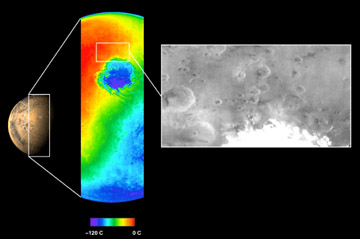
The Mars Odyssey was launched April 7, 2001. After a six-month journey, the Odyssey arrived at Mars on October 24, 2001. The instruments onboard the Mars Odyssey will study the minerals on the surface
...more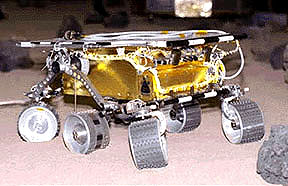
The Mars 2005 mission is still in the planning stages. It is set to launch in the year 2005.
...more


